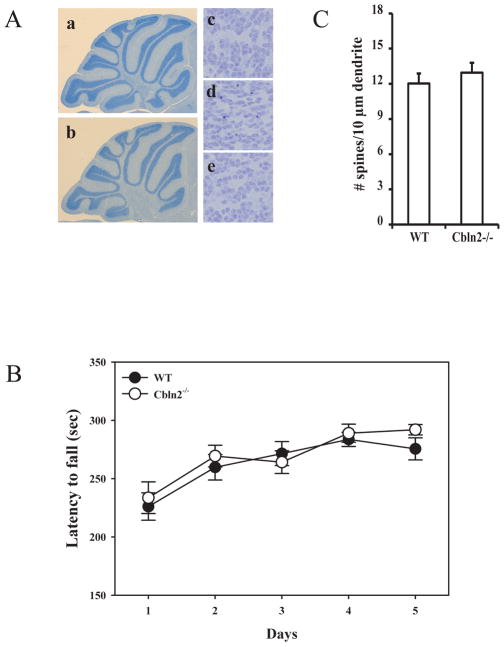Fig. 8.
Cbln2-null mice do not exhibit the same deficits as Cbln1-null mice. (A) Compared to wild type P30 mouse cerebellum (a, c), cerebellum from a littermate Cbln2−/− mouse (b, e) did not show any anatomic defects, whereas P30 cerebellum from a Cbln1−/− mouse (d) has many pyknotic nuclei. (B) Gender balanced littermates of each genotype (n = 7/genotype) between 45 and 55 days old were tested on a standardized accelerating rota-rod. Cbln2-null mice (open circles) are indistinguishable from wild type mice (filled circles) (p > 0.34). Data is mean ± SEM. (C) There is no difference in dendritic spine densities on striatal medium spiny neurons of Cbln2-null (Cbln2−/−) mice compared to wild type (WT) littermates (p > 0.1, n = 4/genotype).

